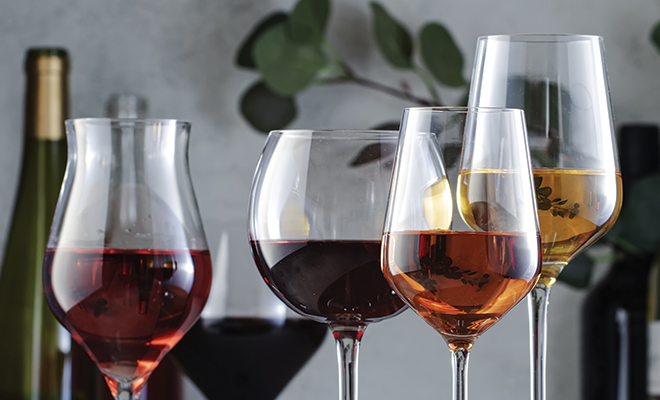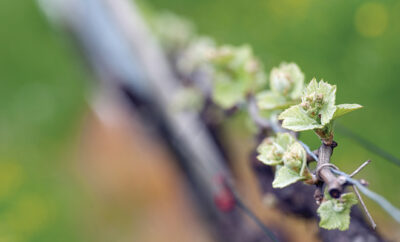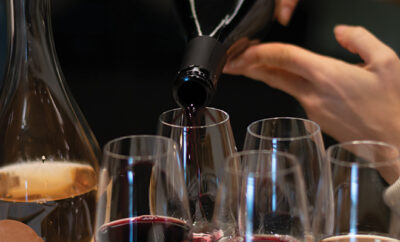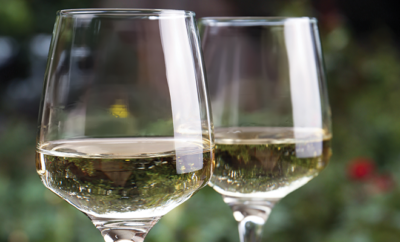
Wine 2023: Trends to Love
It’s been a challenging couple of years for vintners around the globe. Wine-growing regions of France, Spain, Italy and the United States have experienced extreme heat, fires, frost, hail, drought and the consequences of climate change. Yet oenophiles and producers continue to produce this complex and fragrant beverage in new and unexpected ways.
Recently, I visited with the wine and beer manager at my neighborhood specialty store, Cyndi Askins. She’s been a part of the beverage industry as a sales rep and department manager for the last 20 years, taking advantage of educational seminars, conferences and tastings. I asked her to share some of the trends she sees for 2023.
Better-for-You Wines
It’s a style that include nonalcoholic wines and lower-alcohol wines that starts in the vineyard with a decision about when the grapes are picked. Riper fruit yields more sugar, meaning more potential alcohol. Wine Spectator’s MaryAnn Worobiec notes, “The best examples come from brands with estate vineyards, giving them more control over how the grapes are grown and harvested.
Technologies to help get the wines to lower alcohol and calories include spinning cone technology, a type of distillation process, used by Kendall Jackson wines to remove alcohol from the wine to create Avant Lower Calorie. Sunny with a Chance of Flowers pinot noir is fermented to dry, leaving no residual sugar, and a two-step reverse osmosis process, a type of filtration, removes alcohol.
Bubbles
This includes wine spritzers, seltzers, wine in cans such as Line 39’s spritzers that have 100 calories, 5 percent ABV and three ingredients: wine, sparkling water and natural flavors, such as lemon or cherry. She pointed me to Chandon’s new Garden Spritz, blended of sparkling grape wine and locally-sourced oranges, chill and serve over ice or not. I chose not and agree with the description of aromatic and vibrant.
Whole Cluster Fermentation
It’s the winemaker’s choice, and it’s exactly like it sounds. The entire cluster goes into the fermentation tank, including stems, leaves and anything else that might be on the grapes. These wines finish fermentation at lower alcohol levels than de-stemmed wines and generally have strong primary fruit expression, aroma layers and tannin and texture from the stems. Some winemakers, especially those using pinot noir grapes, use whole cluster fermentation to some extent in blends for most years. Some are age worthy; if you’re in doubt, ask your wine expert.
Orange Wines
The deep orange hue is imparted when the grape skins and seeds are left in contact with the juice; lignin in grape seeds provides the color. It’s a natural process in which the fermenting white grapes are mashed and left alone for up to a year, or at the winemaker’s discretion.
The process is ancient; 6,000 years ago in the Caucasus, wines fermented in large subterranean vessels called qvevri that were closed with stones and sealed with beeswax. Winemakers the world over are creating a resurgence of this style, using a diverse variety of white wine grapes. The darker hues are flavor packed and textured; lighter ones are more white-wine style. They’re made in dry and sparkling styles, and some with residual sugar as well.
Pét Nat
It’s shorthand for pétillant naturel, French for “naturally sparkling,” and these lightly sparkling wines have been around for centuries. Natural sparkling wines predate Champagne methods, with the process first recorded in 1531. The ancestral-method wines of southern France’s Gaillac use a traditional process of creating sparkling wine that’s part of the area’s heritage. Italy’s frizzante wines of prosecco and Lambrusco, produced in the rich region of Emilia-Romagna, are meant to be drunk young. Lambrusco received the DOC appellation, the second-best appellation for Italian wines, after DOCG, and several cellars are producing high-quality wines.
A pét nat can be made from any grape, but those higher in acidity tend to work best. There’s not much science to it; nothing’s added during the process, nothing filtered out at the end. The wine’s taken from the tank, bottled while still undergoing fermentation, then sealed using a crown cap, trapping a small amount of carbon dioxide, the natural result of fermentation, creating the bubbles. These wines are bursting with freshness and flavor and typically enjoyed chilled.
Rosé, Rosé, Rosé
Rosé is no longer just for summer. Sparkling rosé is on trend, but you can also consider the traditional French rosé bas and exploring new innovative styles such as a Mendoza Malbec rosé in a Provence style with light, delicate crushed raspberry fruit.
Nonalcoholic Wines and Beers
As an offshoot of better-for-you trends, consumers have reevaluated their relationship with alcohol, especially during the last couple of years. Many people are just drinking less alcohol in general, and the number of producers of wines, beer and spirits with zero alcohol has exploded.
So take your choice, and cheers!
Sources: barrons.com, winespectator.com, danmurphys.com.au, vivino.com and napavalleywineacademy.com.







